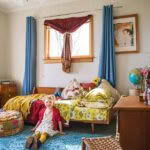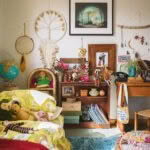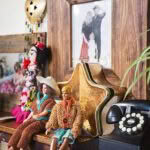Ōamaru’s op-shop queen Anna Easton has a story behind every thrifted treasure in her home
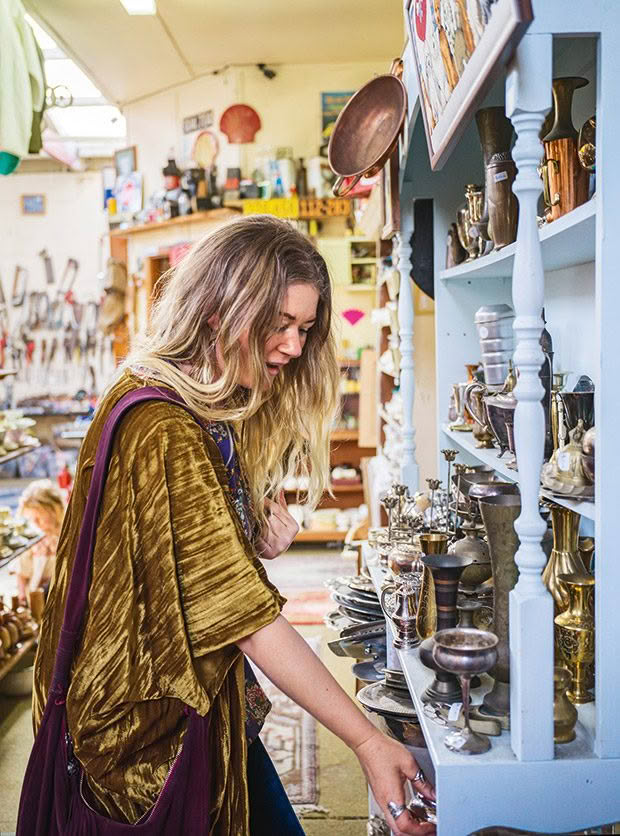
Ōamaru is welcoming this troupe of creative nomadic hipsters with arms wide open.
Words: Nathalie Brown Photos: Rachael McKenna
After two decades traveling the world, including at least 52 countries, photographer/blogger Anna Easton has come to rest in Ōamaru, the town in which she spent her first 18 years. With her is husband Sean, whom she met in London 16 years ago, and their daughter Frankie. They are now on the South Island’s east coast after a decade in Melbourne.
“We relocated to New Zealand at the end of October 2020, smack-bang in the middle of Melbourne’s lockdown. Managed isolation at the Crown Plaza Auckland hotel was crazy,” she says. “We came back to be close to my family in my hometown, and we’re smitten with it. It’s been a huge change.”
A new business is also keeping them busy. Awamoa Portable Loos and Effluent Services might not have the glamour of Anna’s social media presence (she blogs about interiors, domestic travel and the beauty of nature). Still, it fits well with the couple’s commitment to sustainability and environmentalism. Sean is also looking to implement sustainable projects into the business.
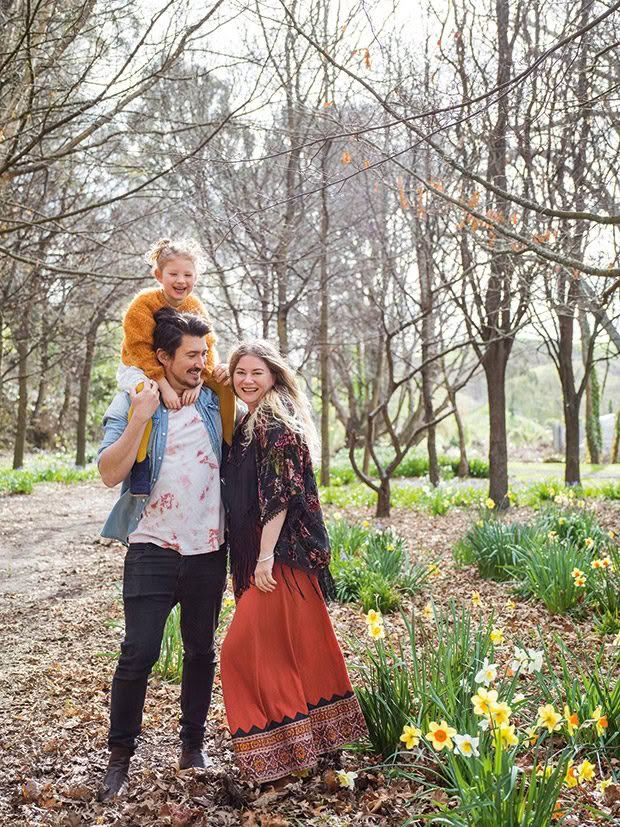
Connecting with nature is a regular activity for the Easton family. A walk in the Ōamaru Public Gardens with daughter Frankie and husband (and dad), Sean, is a favourite pastime.
“Dealing with a biodegradable waste product means that, when we can, we’ll start to focus on sustainability. Nature will do most of the work for us anyway. We collect plenty of animal effluent, so we’ll begin by composting that and reducing the carbon intensity of transporting liquid waste. New technologies such as incinerator toilets that turn waste into fertilizer ash can achieve that. We’re hoping to start trialing one soon and can determine the hows and wheres from there.”
Meanwhile, they’re getting involved with the community and loving life. The home the couple previously built in Melbourne was furnished with op-shop finds. And that commitment to recycling sees their current home celebrating the 1970s; orange light fixtures, macramé plant holders, teal fringed lampshades.
Anna sweeps an arm to her living room: “Nearly everything here has come from rubbish collections, second-hand stores and op-shops.”
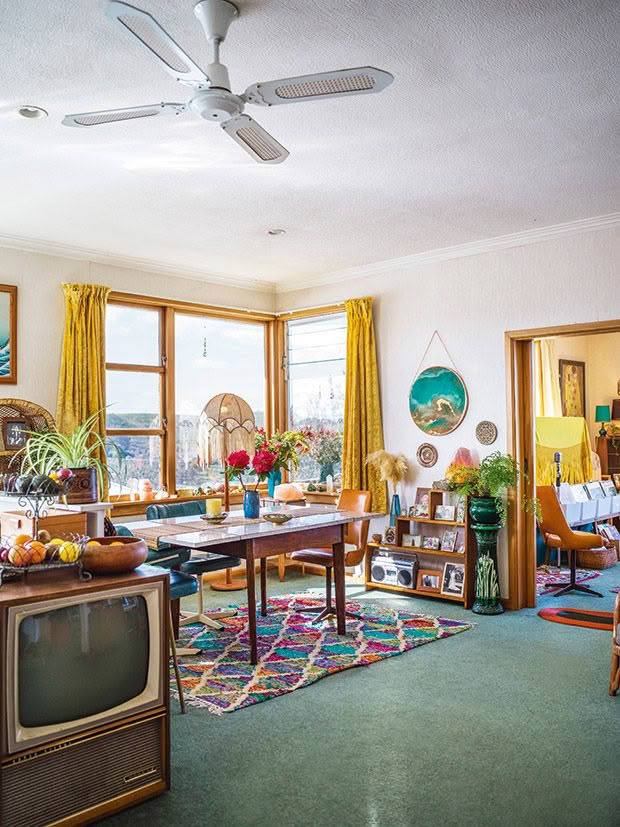
Almost everything in the family home has been gifted, bartered for or, more usually, found in second-hand and thrift shops or online. Anna bought the vintage television specifically as a furniture item, and has found the perfect place for it at the end of the kitchen bench. It’s now a fruit-bowl stand. The floor rug was a gift from Anna’s mother. Artist Golmar Luzza, Fluid Art, exchanged the circular painting on the wall for Anna’s photographic services. Anna’s great-grandma passed the ceramic pot plant stand down through the family. It’s hard to find step shelves, but Anna hunted this set down in an op-shop for $30. She assembled the fringed floor lamp from bits and pieces and hardware store fittings.
And every item has a story. They found the stereo unit, for example, kerbside in Melbourne. It’s an original Marantz system from the 1970s, and most of the vinyl records it plays came from op-shops. Closer to home, Queenstown, about three and a half hours away, is a particularly rich source of treasures.
“It’s amazing what some Queenstown residents donate to that town’s op-shops,” says Anna. Indeed. The couple has found funky faded kilims and well-worn Persians for about $30. It’s a matter of being in the right place at the right time.
While she lived in Melbourne and worked as a freelance photographer, Anna often photographed op shops in locations she hadn’t visited before. She then created a Facebook page, using her images to remember where to look for the best furniture, lamps and fabrics.
- Frankie was outfitted by the Sallies in Ōamaru. Her pink bedspread is a velvet curtain, while the retro Scandinavian day bed was another Melbourne kerbside find. Why Anna asks, would anyone throw that out? She sack-barrowed it home.
- Another barter piece, the family portrait, was adapted from one of Anna’s photographs by an artist friend. Frankie and Anna made the driftwood and autumn-leaf wall hanging above Frankie’s bed.
This led to the website, She Hunts Op Shops, featuring home styling and an introduction to the Easton family life and outdoor adventures, which she shares with an online community of 25,000, including Facebook and Instagram.
“Niche, I know,” she grins. “I never set out to have this platform, creating op-shop adventures. Freelance photography was my main pursuit in Melbourne. I used YouTube to teach myself photography. I even taught myself how to build websites, run a business, do my accounts and promote myself online — that took plenty of late nights and wine.
“I began to operate as a photographer at pixierouge.com.au but I haven’t worked as a professional photographer in more than a year now. Covid-19 did a doozie on my wee business — but it’s still there, and I’ll get back to it sometime.”
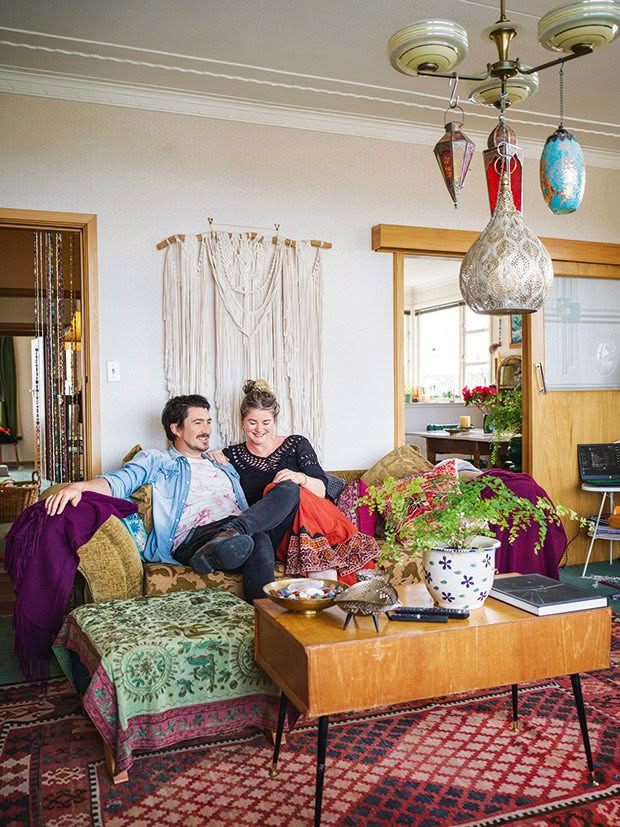
Bali has been a big part of their lives — they often visited as Anna’s parents owned villas there. The macramé wall hanging was made for the couple’s wedding by a Balinese artisan. Anna made the bead curtain to Sean’s right from Balinese glass.
Social media posting is strictly a hobby for Anna, done in her spare time. “I’ve never sold anything online or otherwise from op-shops. The Facebook page has no paid content. I don’t make any money from the sites, but I’ve been able to promote my photography business gently and humbly.
“I do exchange professional photos, a post and inclusion in my guides in return for B&B accommodation. Many people ask me to promote their goods in return for their products, and I am happy to do so if they fit my ethos. I recently swapped with a woman who makes comfy underpants from scraps and fabrics found in op-shops. I’m certainly not out there to make money from this nor be an influencer.
“I’m so glad my wonderful, engaging and awesome community exists. Many grandmas love me and love the fact that I hunt down op-shops and photograph them. Some people have followed my page for years. They’ve seen us return home to Ōamaru, and they love the place just as we do. I have even created an Ōamaru op-shop and adventure guide on the website.”
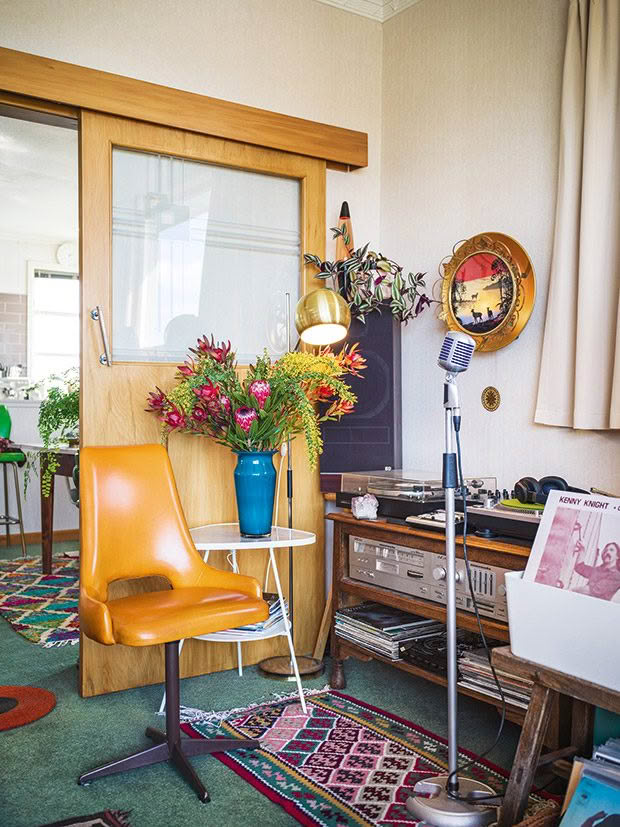
The mustard vinyl swivel chair, one of a pair for $15 each, is a favourite find. Anna is big fan of karaoke, and her microphone and Marantz stereo came from second-hand electronics stores.
She and Sean have always been keen on exploring off-the-track locations: forests, rivers, lakes and foothills, and quirky accommodation places in which to stay. When they lived in Melbourne, he filmed clips of their weekend excursions, which were included in the blog.
“It came to the attention of the Shoalhaven City Council (which covers southern New South Wales), and they asked us to travel around their region for three weeks, creating a guide. That was groovy-as. They gave us a budget to travel and visit op-shops and produce a treasure-hunting guide. We’ve traveled to forests; we’ve been kayaking on lakes and had free accommodation in out-of-the-way B&Bs.”
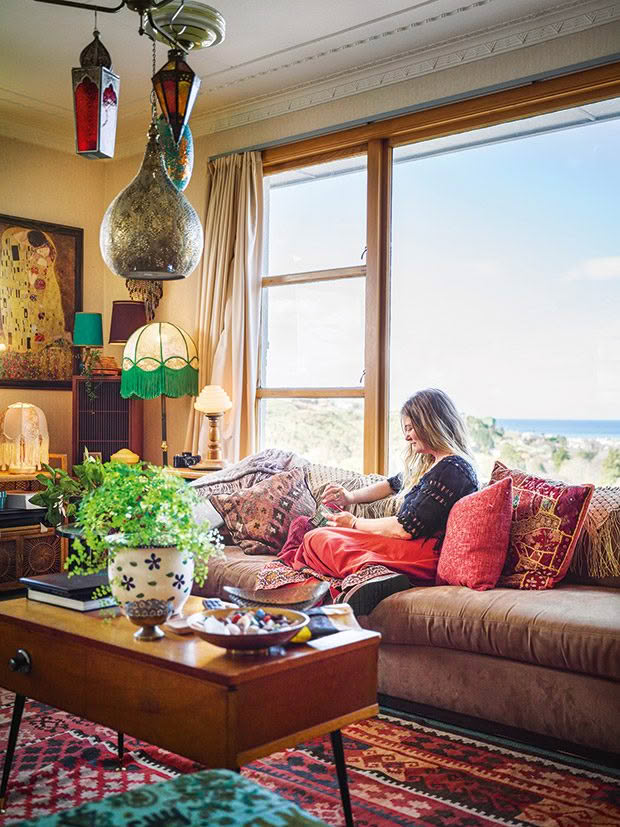
Lamps are Anna’s thing. The hanging Moroccan tea-light lamps (above) bought on Trade Me also work well on the patio for evening dining. The green fringed lamp was another kerbside recycling find in suburban Melbourne. The vintage black telephone is another family heirloom.
While they are not thinking of using their Awamoa business to produce a guide to the wilderness wharepaku (toilets) of the Waitaki District around Ōamaru, Anna and Sean have uploaded video snips of spectacular lakeside and backcountry locations on their tūtae (poo) disposal route and posted them on her website and Awamoa FB page.
But it is a thought: an alternative travel and treasure hunting guide is something a forward-thinking territorial authority might include in its long-term district plan.
HUNTING OP SHOPS
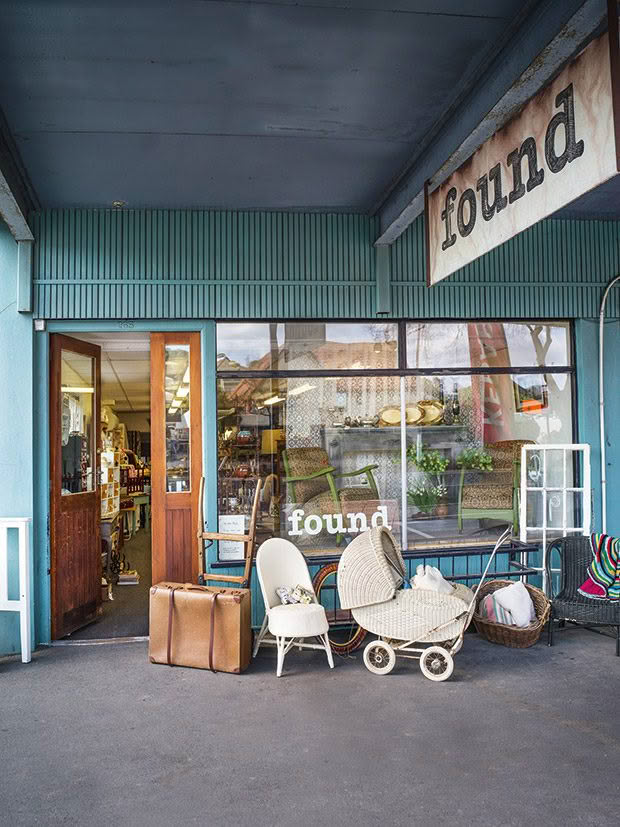
Until the pandemic struck, Found owner Wendy Cayford often spent time in the South of France, trawling the flea markets and bringing home suitcases of treasures to sell at reasonable prices.
A one-woman recyling tornado, Anna can visit 10 thrift shops in a day without leaving Ōamaru and then do it again the following week. But she’s no hoarder; everything she buys is something she considers to be either useful or beautiful.
Ōamaru has more than a dozen op shops and second-hand emporiums, online buy-sell-exchange sites plus upmarket antique shops and mid-range to lavish second-time-around clothing and accessories stores. And Anna’s has them all sussed.
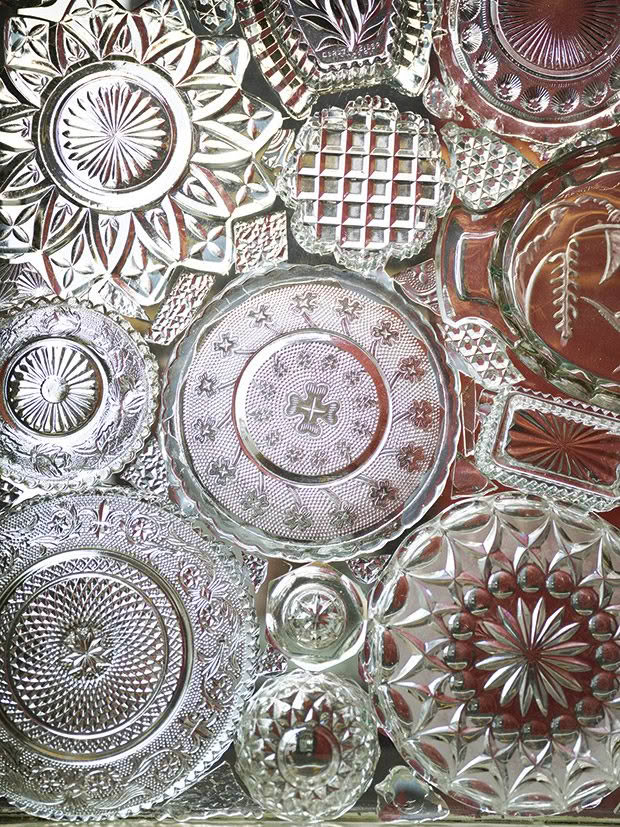
The moulded glass window was made locally from glass plates.
“I know where I’m likely to find any item I need,” she says. “All our business stationery such as hole punchers, tape dispensers and staplers come from the Ōamaru Charity Shop. The Waitaki Resource Recovery Park and Waitaki Trading
Post are great for shovels, screwdrivers and nails as well as books, bathtubs, furniture and kitchen bench units. “The Sallies [Salvation Army Family Store] and other charity stores always sell clothing, curtains and homeware, and I make sure I visit my ‘traps’ regularly to be there when the good stuff comes in.”
ANNA’S TIPS FOR THRIFTY SHOPPING
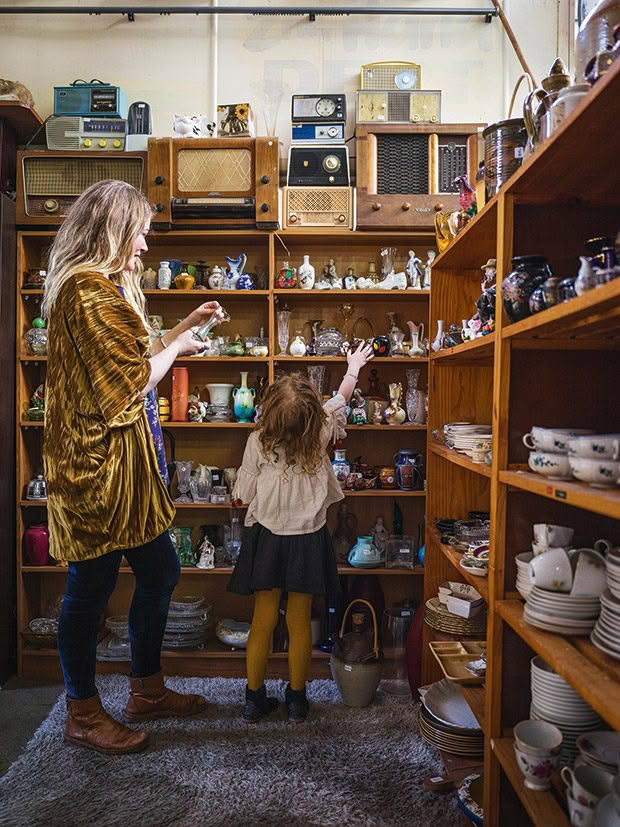
Anna and Frankie regularly explore Ōamaru’s 12-plus op-shops, second-hand emporiums and collectables stores, including Waitaki Traders, which has an impressive number of vintage radios.
1. “I check the quality and usability of every item I buy. Also, I try not to buy too much. I can go to five op-shops and come home with just one bowl.
2. “Most medium-sized towns have a recycling centre. I would go to the Waitaki Resource Recovery Park all the time if I were building or restoring a house. There’s a lot of junk but some incredible gems. Plus, the money you spend in these places goes back into maintaining the recycling system. Have a rummage.
3. “We don’t have kerbside inorganic recycling in Ōamaru, but it is available in Auckland. It is a fabulous source of furniture and household items.
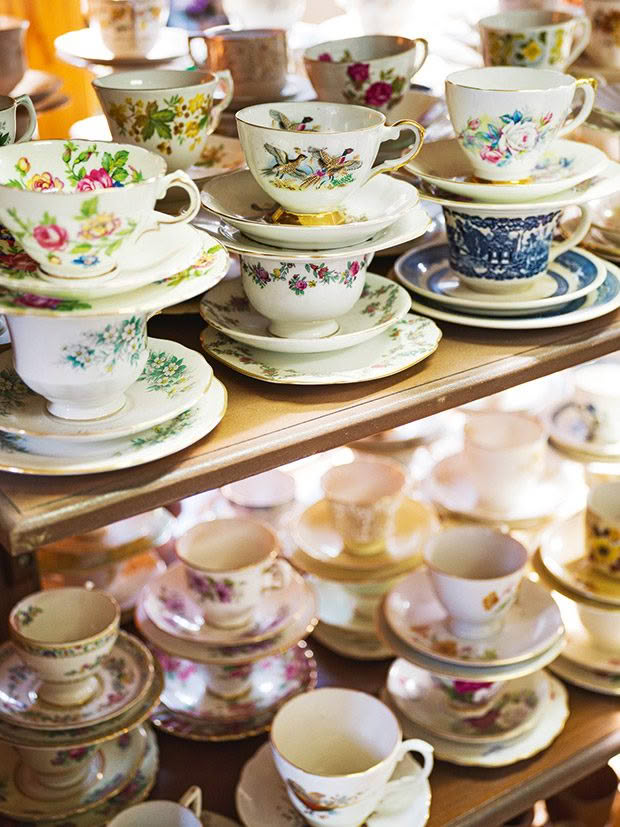
4. “Tips for not getting overwhelmed in big op-shops? I often go straight for my favourite section such as kitchenwares, curtains, books. Sometimes I only look at one section and then leave.”
5. “Op-shopping for clothes is an art in itself. I stand at one end of a rack and scan for a colour I like, then feel the fabric and then, only if it’s good quality, I check its style and size. It saves time which, in some ways, is as important as saving money.”
THE BIRTH OF AN IDEA
The difficulties Anna and Sean experienced with the birth of their daughter Frankie led Anna to volunteer her photography services to new parents in the neonatal unit of Melbourne Royal Women’s Hospital.
“It took us six years to become pregnant, and Frankie’s gestation and birth were not easy. I spent five weeks in Melbourne’s Royal Women’s Hospital before the birth. Even then, Frankie was five weeks premature.
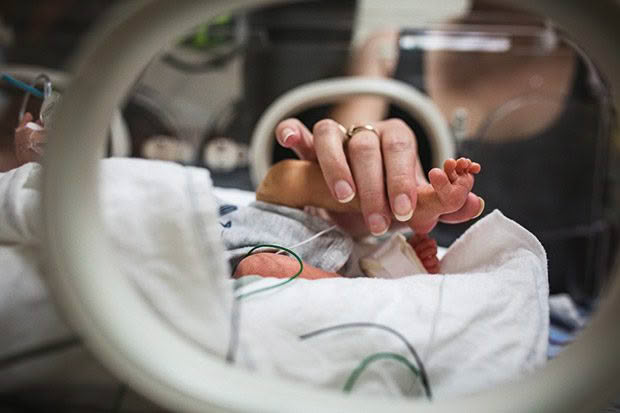
“I just love photographing newborns,” says Anna, a self-taught photogapher. “The sessions normally take a little longer as there is feeding, cuddling, settling and changing involved. But that’s cool because often those feeding and changing moments are so lovely to photograph.”
“We spent two weeks in the neonatal intensive care unit (NICU) after she was born, and our photos from that time mean the world to us. I realized that every family in NICU would want to have such images of their newborns.
“When Frankie was two, I volunteered for three years at the hospital photographing premmie babies — mostly twins — and their parents in the NICU ward. Every two weeks, I would spend a day cruising around with my camera offering free photo sessions, simply because I could. That was a special gig, to be honest.” (More of the photographs and blog notes are posted at pixierouge.com)
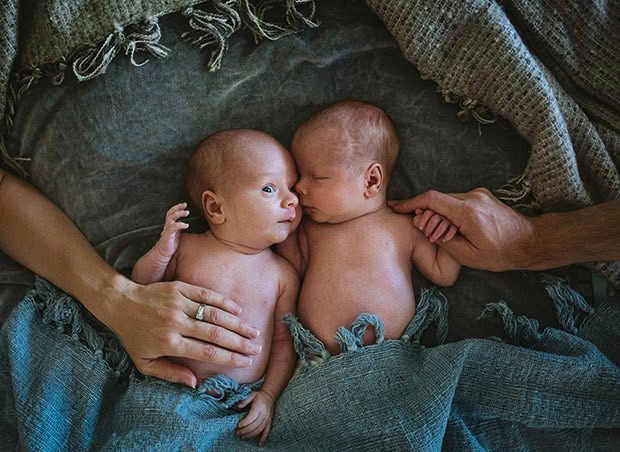
“My mother was a midwife for 25 years, so I was brought up with babies. And thanks to my own precious daughter Frankie, I understand now, more than ever, how important it is to capture these fleeting images.”
“After three years, I stopped taking the hospital shots, and while my passion was still photographing newborns and documenting families in their homes, I carried on photographing interior design, hundreds and hundreds of weddings, as well as artists’ and business people’s profiles.
“That all changed, of course, when Covid-19 hit. I had to cancel all my wedding photography dates for the following year, and Sean lost his job. That’s when we decided to come home to Ōamaru.”
MORE HERE
This Auckland vintage collector simply can’t throw away beautiful things
Love this story? Subscribe now!
 This article first appeared in NZ Life & Leisure Magazine.
This article first appeared in NZ Life & Leisure Magazine.
